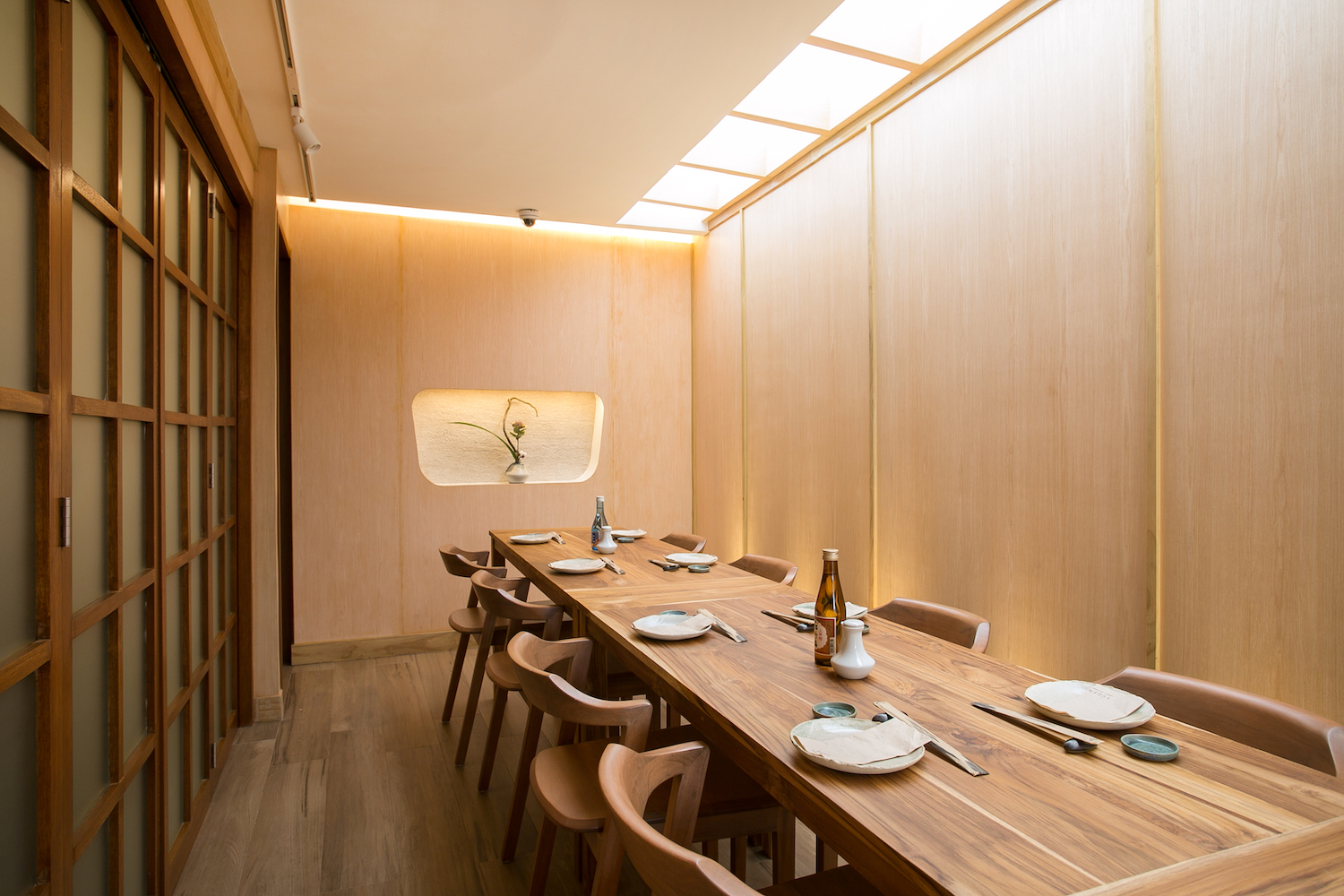A word of advice when walking into Yūgen Japanese Restaurant: It pays to generally hold your head high to look around. Not just to scan the space for a place to settle in but also to study the impeccable display of Japanese philosophies.
After all, Japan has taught us many principles to apply in real life—kanso (the art of simplicity), wabi-sabi (the acceptance of imperfection), omotenashi (selfless customer service), and kintsugi (the art of repairing broken pottery with gold and treating the fractures as an inherent quality to be valued)—and they’re all in full display at this renewed Japanese restaurant in Pasig.
But there’s another art-derived, architectural story that stands out: yohaku no bi.
The beauty in blank spaces. Sparseness. Emptiness.
The terms might not sound like a compliment but within the context of Japanese art and design, empty speaks volumes. Literally translating into the beauty of extra white, the principle alludes to the actual charm of white spaces left alone in works of art. Simply put, it is the art of appreciating an intentional void.
“Filipinos tend to have a fear of empty space,” explains Evonne Limsui. “Whenever you see an empty space, we relate it to emptiness or a negative connotation. But the Japanese think of it as an important element in their design.”
And Evonne Limsui, the interior design student who materialized the restaurant owned and operated by her passionate mother, made sure the aesthetic rang loud and clear.
“Filipinos tend to have a fear of empty space,” explains Limsui. “Whenever you see an empty space, we relate it to emptiness or a negative connotation. But the Japanese think of it as an important element in their design.”
Blankness bites in a good way

Despite her youth, the 23-year-old senior from De La Salle-College of St. Benilde shows deft experience in translating her vision into reality. She visualizes vacancy, portrays paucity, and salutes smart scarcity. She dismantles notions of ‘what could have been’ and ‘what more could be’ on the blank walls of the restaurant and instead makes a case for ‘this is how it should always be.’
Yūgen Japanese Restaurant manages to remain deliberately expressive, warm, and creatively constructed amid the architectural hush. You understand that design is something to be devoured just as much as the extensive assembly of washoku on the neatly arranged and branded physical menu by Vancouver-based visual designer and illustrator Una Gil.
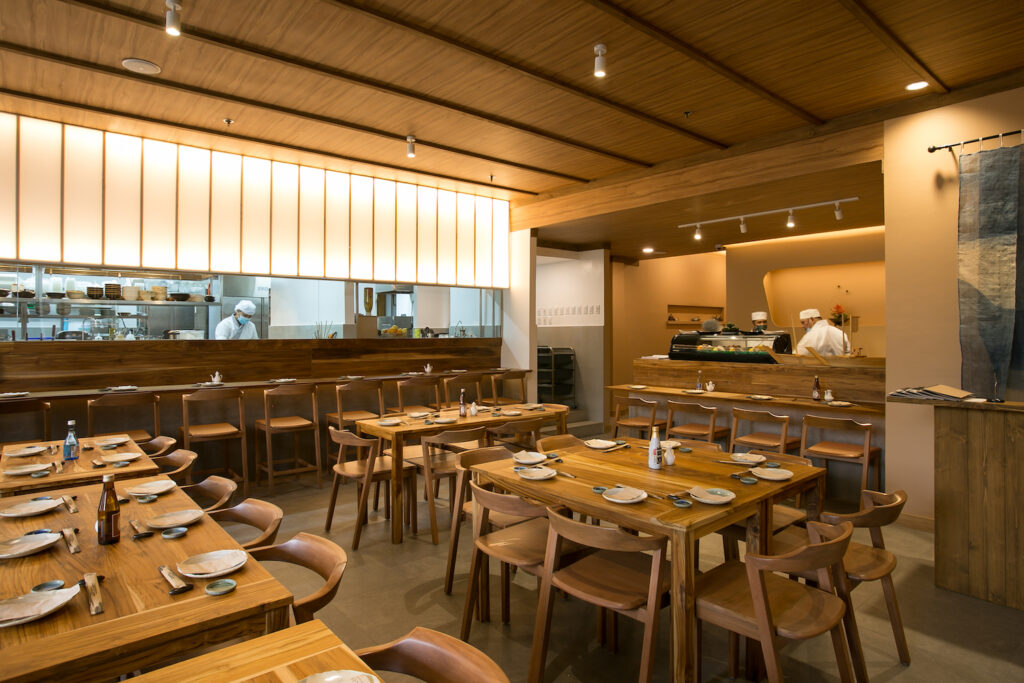

“I based everything on what my mom’s vision was for the restaurant,” says Limsui. “She wanted it to be homey and calm. She wanted dining at Yūgen to be the most comforting part of the customers’ day. What better concept to draw inspiration from than the Japanese house?”
This vision gave rise to this clearly “pleasant place” to dine in and work at. “Since it’s an indoor space, the approach we thought was to use a lot of natural materials and unconcealed finishes.”
At Yūgen Japanese Restaurant, there’s plenty of room to breathe
Studying the conditions and the environment Limsiu created is fascinating, fashioning a restaurant that emulates natural Japanese landscapes.
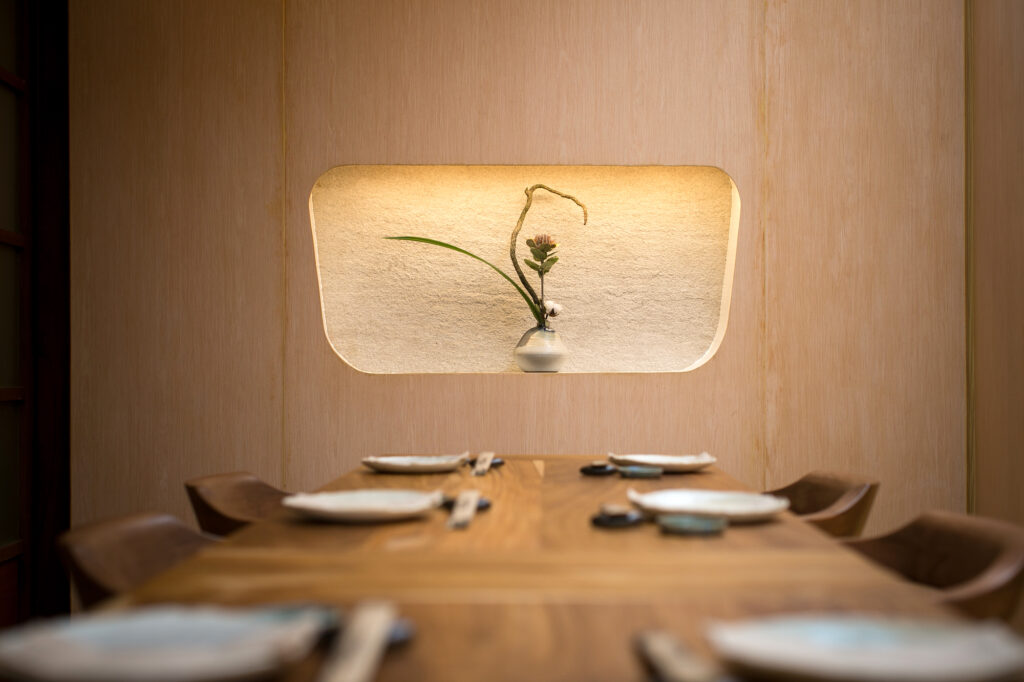
You’re thrusted into a machiya-like space subsisting mostly on warm wood in various iterations and directions—skyward in the saobuchi ceilings, throughout the main dining area with the luxurious Lamana teak tables and custom chairs, and even beyond into a private dining room with a lengthy skylight that decoratively and diffusely lines a whole wall leading to a little Zen garden.
“There are a few subtle motifs from Japanese houses you might have noticed. At the entrance, we patterned it after a traditional Japanese entryway called genkan where they take off their shoes. And then it’s also common in Japanese houses to have niche shelves for art and flowers.”
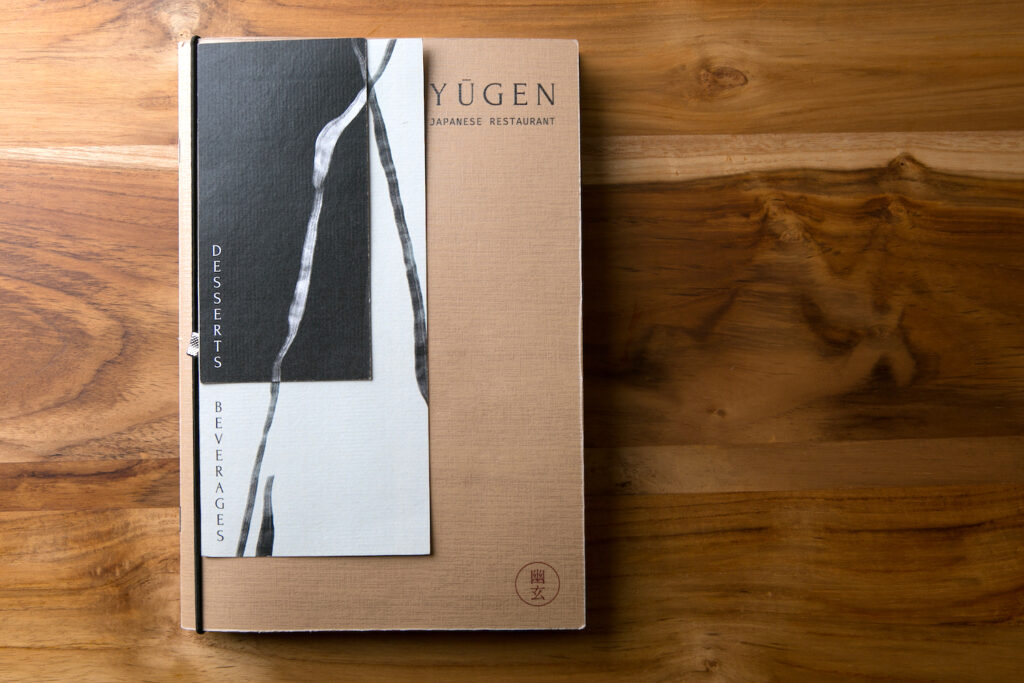
Sit down on one of the Lamana tables and the stillness reveals even more of the pocket universe Limsui describes. You’ll find skillful work by local artisans such as EJ Espiritu of Cornerstone Pottery whose dreamy ceramic tableware in palettes like cerulean and turquoise espouses the wabi-sabi concept Limsui threads into the space. “The beauty about ceramics is that no two pieces are the same.” The overall lighting, too, is just bright enough to nudge customers to admire the presentation.
Evonne Limsui dismantles notions of ‘what could have been’ and ‘what more could be’ on the blank walls of the restaurant and instead makes a case for ‘this is how it should always be.’
Chairs from Oliohaus Custom Furniture, ikebanas from Japan- and Jakarta-educated artist Mila Robles, and a Yana Ofrasio textile original at the cashier section bolster the monumental Japanese streak of the restaurant.
“It’s made from abaca silk and it’s abaca-bounded that is sourced from a local Aklanon weaving community,” she says of the textile drape. “Then it’s dyed with Philippine indigo.”
Negative spaces abound but it’s intentional enough to allow imaginations to soar and wrestle with the compelling narratives they hold. Limsui makes curious souls thirst for what else can be expected from the void right before your eyes.
Taking Japanese beauty to Filipino palates
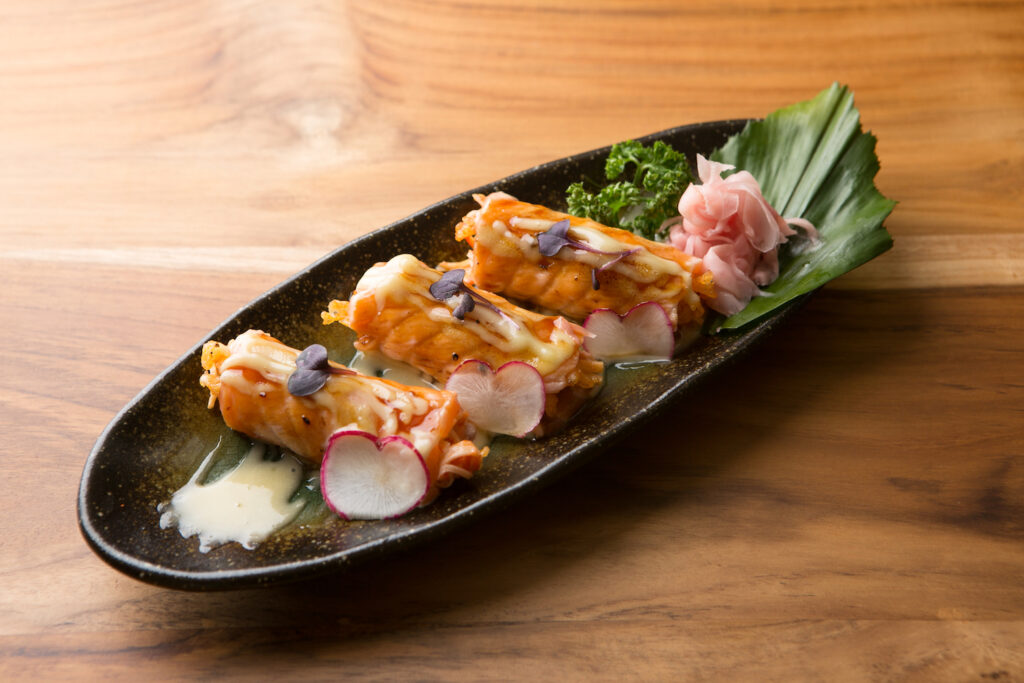
Finding a detail that would appeal to different customers is a cinch. And while there’s plenty that may pique the collective imaginations of Filipinos, design isn’t the only appeal of the restaurant.
The food here neither pivots nor departs from what is essentially Japanese. By design, unnecessary experimentations are largely absent, instead Yūgen Japanese Restaurant plays with classics and weaves them into modern interpretations meant to be shared in good company.
Pore over the vast menu and the bigger picture is clear: Yūgen Japanese Restaurant explores familiar terrain with one eye on authenticity and another on presentation, which again circles back to the restaurant’s design principles.
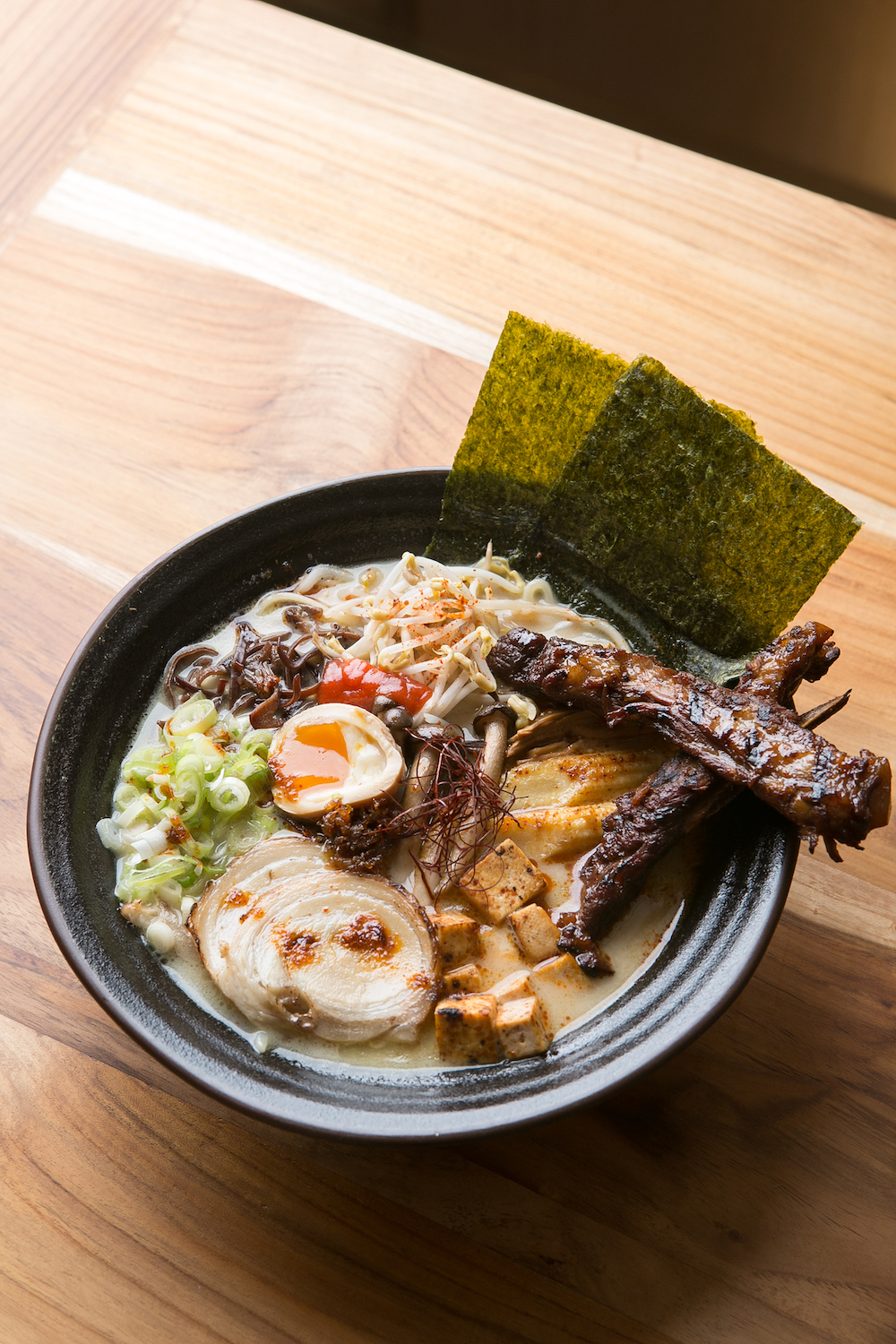
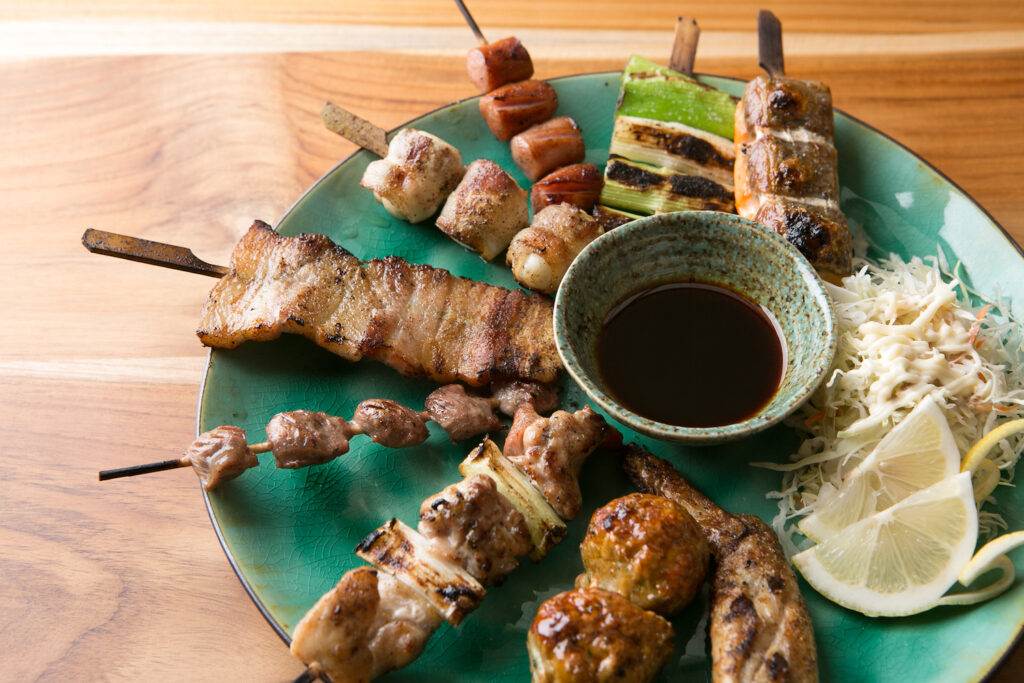
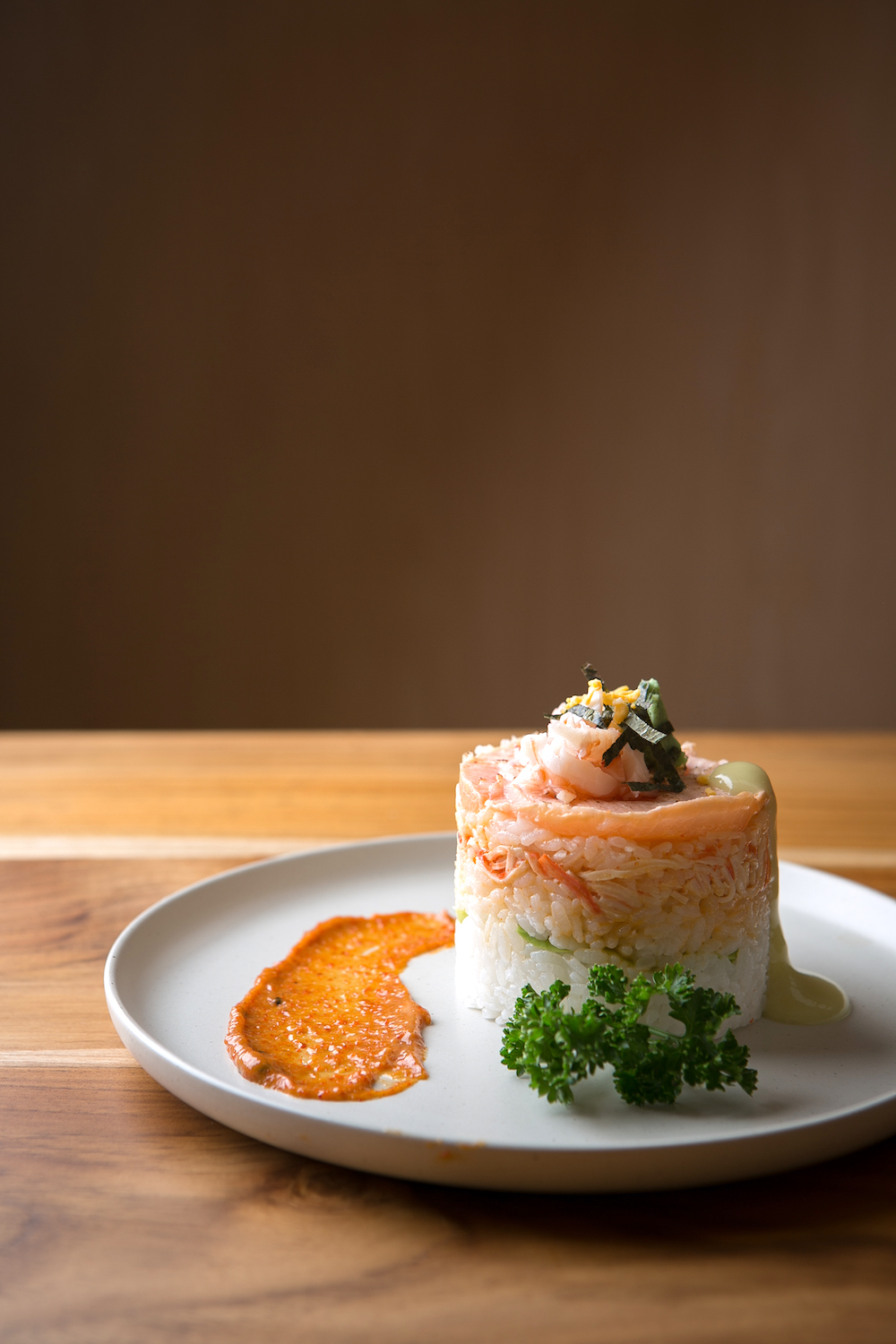
But in contrast to the minimalistic flush of the interiors, the dishes burst and swell with the five principles of Japanese cuisine as well as the fervor of Limsui’s mother when it comes to entertaining guests.
Start with a timeless tropical salad that seems to use every possible quality produce—before being drenched in a mild apple vinaigrette—then dive right into the lightly torched, bite-sized seared salmon that mixes shredded crab sticks, crispy tempura bits, and sliced salmon with plenty of flavors from the wasabi mayo and orange tobiko. It’s virtually the taste of the Japanese sea and plains in one bite.
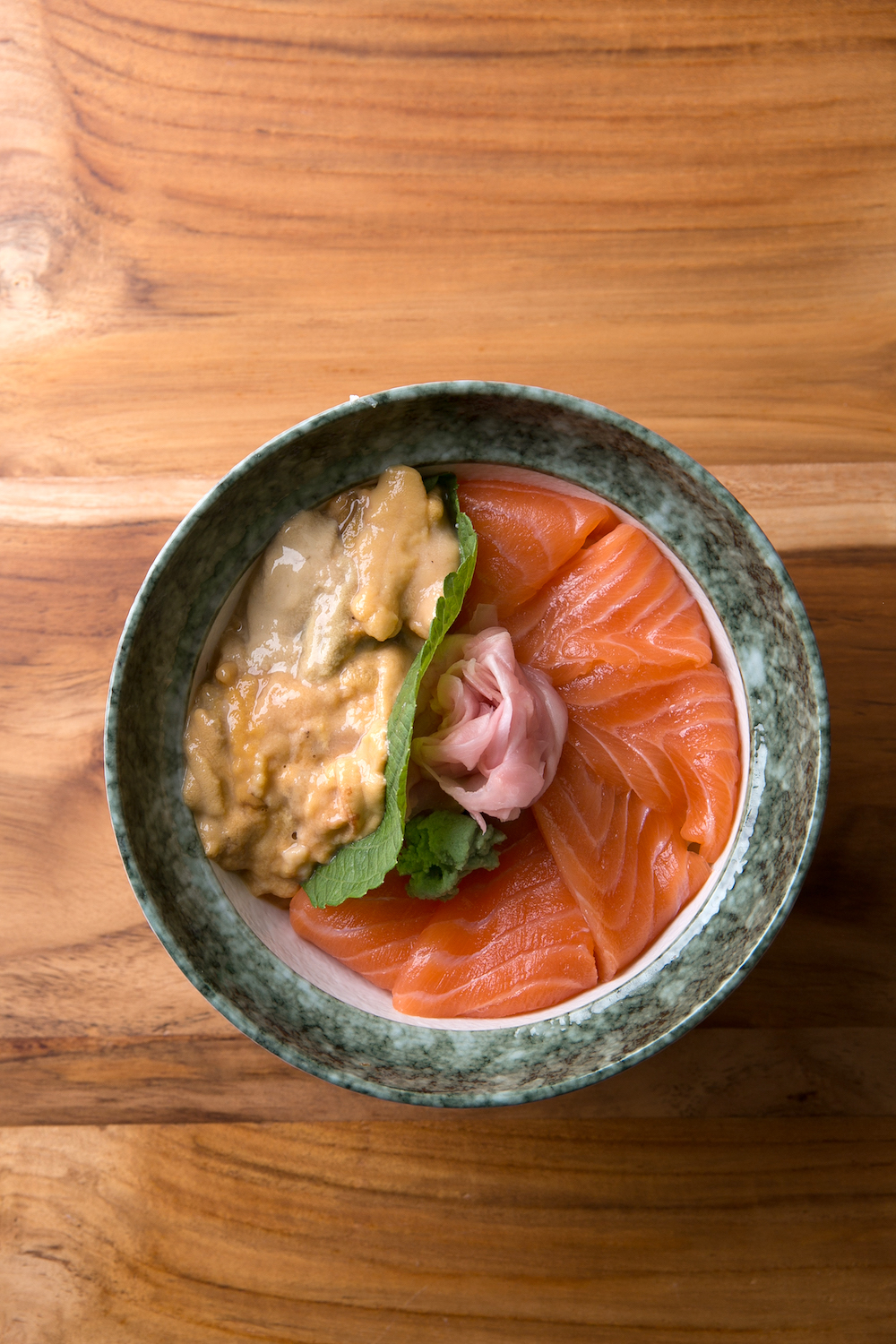
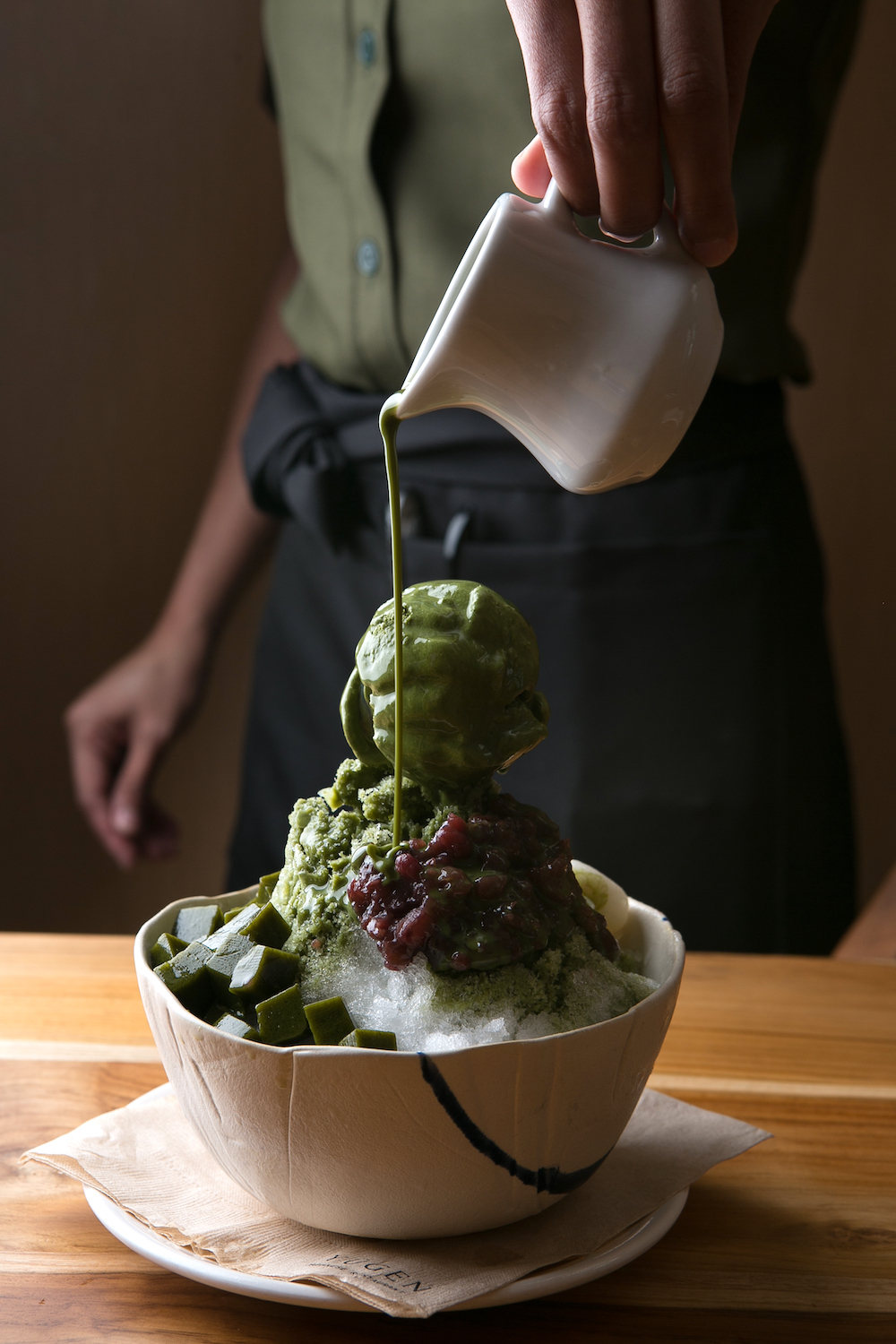
Another gem is the Yokozuna Ramen. There’s a full-flavored bombast to the richness of the bowl, thanks to the fermented bamboo shoots, braised pork belly roll, cloud ear mushroom, baby corn, fried tofu, and pork ribs swimming in a creamy tonkotsu broth but each bite and slurp delivers an uplifting satisfaction.
Elsewhere, dishes such as the spicy and sculptural Dynamite Tower, the assortment of skewers in the Kushiyaki Moriawase (which include negima, arabiki, and butabara), and the Matcha Kakigori (snowflake-textured ice with azuki beans, mochi, and matcha ice cream) all sizzle in savory, salty, spicy, and sweet triumph.
Making the invisible visible

Ten years ago, the space where Yūgen Japanese Restaurant now stands used to be a cornerstone of the Pasig dining scene. For all its reinvention in five months, no detail was overlooked in its evolutionary shift.
Abandoning its old identity was a liberating exercise for Limsui who used her creative freedom to great effect. To say that the 76-seater restaurant is just a story of physical reinvention is a misnomer. “When you’re in the restaurant business, it’s about hospitality, right? And the customers expect to be served. So you always have to familiarize yourself with what they’re looking for, what they want, and what makes them happy,” she says.
“When you’re in the restaurant business, it’s about hospitality, right? And the customers expect to be served. So you always have to familiarize yourself with what they’re looking for, what they want, and what makes them happy.”
Empathy emanates from the austere environment, seen in the way the servers precisely anticipate customer needs in their chic olive and black uniforms that were inspired by Japanese hospitality dressing.
With Limsui’s first foray into commercial design, beauty emerges from blankness. And in Yūgen Japanese Restaurant’s bid for a clean slate, it certainly blooms.





